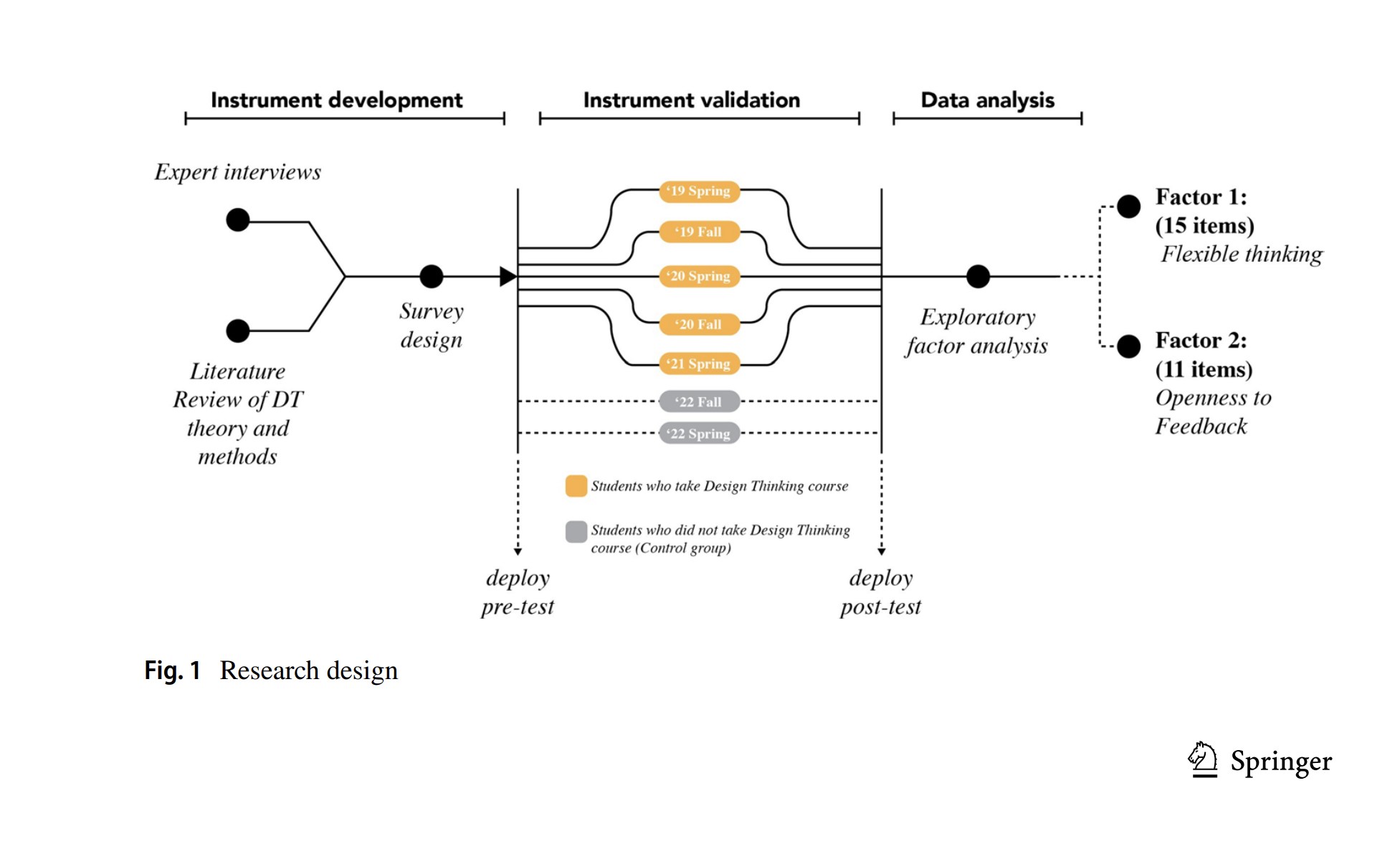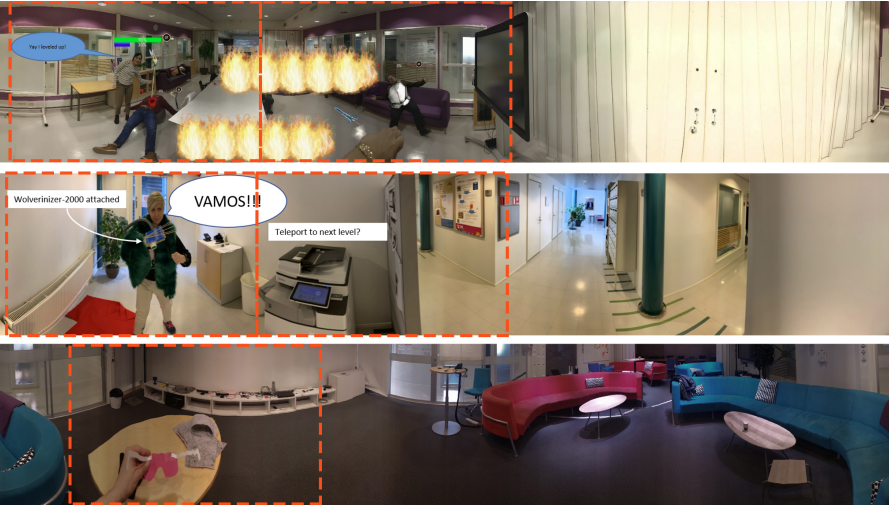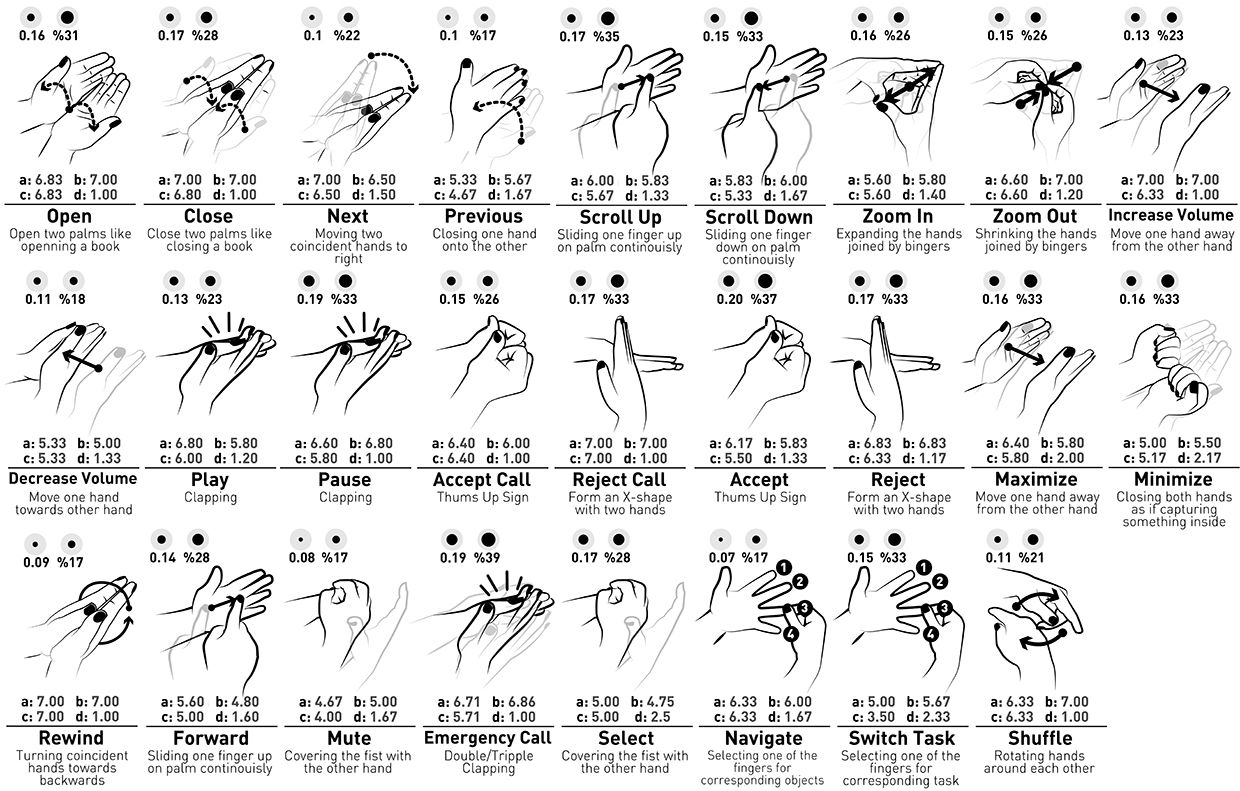Abstract
Design Thinking (DT), the collaborative and human-centered problem-solving approach to tackling complex issues, is one of the most coveted skill sets of the twenty-first century. Institutions in industry and academia are actively seeking train- ing opportunities to increase their staff’s capability to harness the intricacies of DT. However, although there have been several different methods and curric- ula aimed at increasing individuals’ abilities in utilizing DT, previous studies do not put forth a validated scale that can be used to evaluate the impact of DT training on multidisciplinary undergraduate students with no prior DT experi- ence. We address this gap by providing a validated scale to measure the impact of DT mindsets and skills and to reveal the impact of a DT course based on self-reported quantitative data from 162 participants (control: 34, experimental: 128) who completed pre- and post-assessments. Moreover, we provide the result- ing two-factor structure, Flexible Thinking and Openness to Feedback, and show a statistically significant positive impact of a DT course for undergraduate stu- dents from diverse disciplines. In our experiment, modifying the IDEO Toolkit model by incorporating’video sketching’ and a’cryptomnesia-preventing guerrilla thinking task’ allowed us to develop a more affordable and universally accessible curriculum, as well as playing a crucial role in facilitating the development pro- cess. The validated scale developed in this research holds significant potential for adoption across educational, business, and industrial contexts, where fostering creativity and innovation is critical.
Role: Co-author, Concept Co-Creator
Type: Full Paper
Journal: International Journal of Technology and Design Education
Stats: h5-index:46
Date: 2025
Co-Authors: Berk Göksenin Tan, Özüm Karya Sakman, Çağlar Genç, Hayati Havlucu, Ceylan Beşevli, Zeynep Yıldız, Yağmur Kocaman, İhsan Ozan Yıldırım, Cansu Çetin Er, Ege Keskin, Sami Gülgöz and Oğuzhan Özcan


